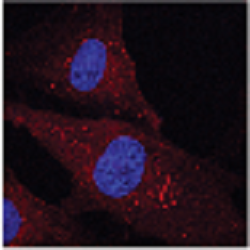
One important feature of certain types of neurodegenerative disease is the intracellular accumulation of certain misfolded, aggregated proteins which are toxic to nerve cells. Preventing the buildup of such aggregates or activating their clearance from cells are key strategies in the search for effective treatments against Alzheimer’s, Parkinson’s, Huntington’s and other diseases. The CIMR’s Rubinsztein lab, in collaboration with others, previously discovered a small molecule called SMER28 which could increase intracellular protein clearance through the process of autophagy, but independently of the metabolic master regulator mTOR. A new Rubinsztein lab publication in Nature Communications from joint first authors Lidia Wrobel and Sandra Hill, with collaborators at AstraZeneca and Biognosys, reveals SMER28 and similar compounds as activators of the D1 ATPase domain of p97 (also known as VCP) and thereby enabling increased degradation specifically of the aggregate-prone and toxic species of proteins like huntingtin. The increased clearance of toxic proteins by SMER28 occurs via both autophagy and the ubiquitin-proteasome pathways, further supporting this approach in neurodegeneration drug discovery.

